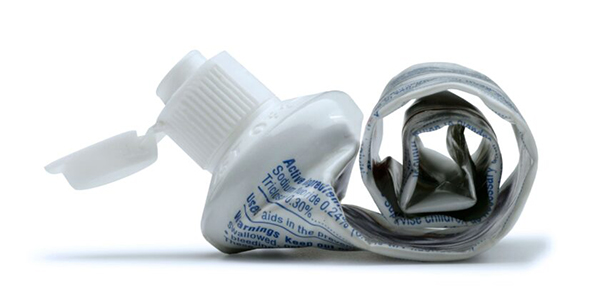
Toothpaste has been on my shopping list for a while now. I’ve folded the tube methodically from the bottom and finally, I am reaching the stage in which any further paste still in the tube will require me to fold the top back on itself and use my thumb to press up. I just want to get everything out before I discard the tube.
To be honest, I have the same compulsion with peanut butter, lotion and condiments. I would be afraid to know how much time I have spent in my lifetime on the obsession of getting 100% of the product I paid for. As I have become older and (maybe) wiser I have come to realize that time spent with mustard is not the same as time spent with family and friends. Do I really need to get everything or is knowing that I got most of it enough?
That’s the kind of question many asphalt technologists ask when considering the laboratory long-term aging of an asphalt mixture. Do we need to spend the time to get a perfect simulation of the aged state of an asphalt mixture after years in-service on the road or can we get a reasonable simulation in a shorter time and be satisfied? In other words, will something less than 100% suffice?
With the increased interest in minimizing early cracking of asphalt pavements, asphalt technologists have not only focused on what tests can characterize cracking performance but what procedures can be employed to get the lab-prepared asphalt mixture into an aged state simulating a number of years in service when cracking may become an issue. Like all things with asphalt, it mostly comes down to the usual suspects – time and temperature.
The aging procedure promoted by the SHRP was intended to be used before conducting performance tests for assessing intermediate temperature (fatigue) and low temperature (thermal) cracking. The procedure became AASHTO R 30. In it, a short-term conditioned loose mix was compacted to produce a specimen of specific dimensions and percentage of air voids and then placed in a forced draft oven at 85°C for 5 days. The specimens were then removed from the oven and tested.
Subsequent research (NCHRP Report 919) indicated that the SHRP long-term aging procedure really only simulated a few years in-service – not the “long-term” that was hoped for. The researchers instead proposed conducting loose mix aging in a forced draft oven at 85°C for five days. The loose mix specimen could then be compacted to the proper dimensions and percentage of air voids prior to testing. Although the preparation time was the same, the research found that the loose mix aging simulated 7-12 years in service.
Closely following that work, research (NCHRP Reports 871 and 973) proposed a procedure in which loose mix is aged at 95°C for a variable number of days depending on how deep in the pavement structure the mix would be used – aging at or near the surface is more severe than it would be for a base mix – and how many years of aging the designer wanted to simulate – more years, more severe aging. As before, the loose mix could then be compacted and tested.

The National Center for Asphalt Technology (NCAT) looked to simplify the process, believing that the aging procedures were too long for mix design (and certainly way too long for any QA operations) and coined the term “critical aging.” The idea of critical aging is not that you are perfectly simulating a certain number of years of life in a specific climate, but rather are just creating an aged state by which you can evaluate lab cracking performance. This simplification uses eight hours of loose mix aging at 135°C before the mix is compacted and tested. The counterargument offered by the authors of NCHRP Report 871 is that loose mix aging above 95°C alters the formation of oxidation products resulting in a lab-aged asphalt binder that does not chemically resemble the aged asphalt binder from an in-service pavement.
So, what do we do? The answer lies in what we want to achieve. If we are working on a major project and long-term performance is imperative, then maybe we take the most conservative approach and use the procedures described in NCHRP Reports 871 and 973. If a more routine evaluation of cracking performance is needed just to ensure we don’t have an early failure, then a quicker procedure may be more appropriate – even if it may not be 100% “correct.”
With toothpaste and asphalt mixture aging maybe we can learn to be satisfied by getting the most we can in a reasonable time. In other words, respectfully disagreeing with Wilson Pickett, perhaps “Ninety-Nine and a Half” will do.
Mike Anderson is the Director of Research and Laboratory Services at the Asphalt Institute.













